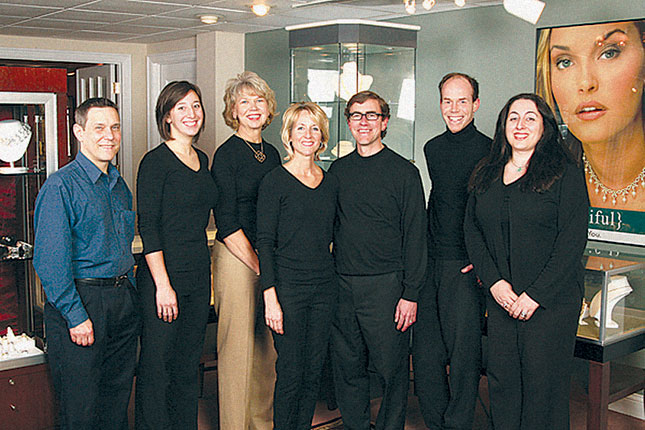
Fast Risers: Krombholz Jewelers
Cincinnati , OH
BY THE INSTORE TEAM

Published in the June 2013 issue
2011 had been another disappointing year for Lee Krombholz, the third in a row that his store had lost money as the recession buffeted Cincinnati’s economy. If things didn’t turn around quickly, his 80-year-old family business faced a very uncertain future.
“In the beginning of 2012 we had a store strategic retreat. We saw the writing on the wall. Our previously successful business model wasn’t coming back quick enough,” he says.
Advertisement
Krombholz realized he had only one option: Make a profit without buying inventory. That meant more consignment and more custom.
Throughout much of the previous decade, Krombholz Jewelers had been driven by four main engines: custom, normal out-of-case sales, estate jewelry and upper-end sales (above $7,000). During the threeyear downturn, two of those businesses — custom and estate — did well while the other two tanked, but based on the store’s old business model, all four parts had to do “at least OK” or the store would lose money.
“We had spent the last 10 years promoting the custom portion of our business, which grew to its capacity during the downturn. The estate jewelry growth was organic. It just happened because we offered it and we are good at it,” Krombholz says.
In May 2012, Krombholz embarked on his radical overhaul. The entire store was reorganized with the estate department taking over 50 percent of the showroom. The other 50 percent was allotted to the store’s custom line, Just Like You Designs, and some basics: nonbranded diamond jewelry and a small amount of branded pricepointed jewelry. The expanded estate category was promoted via direct mail and social media, with an emphasis on building the “Krombholz Vintage” brand.
The bold bet paid off. 2012 was the store’s best year ever, with sales surging more than 25 percent to $2.1 million. Perhaps most impressive, it was done on less than $200,000 in owned inventory.
Krombholz says his strategic shift was above all a learning experience. “Last year disproved everything I thought was fact. Ninety-eight percent of our customers will consider estate jewelry a way to hedge the escalating costs of fine jewelry,” he says, adding that most of the estate jewelry is consigned from existing clients who love jewelry, but don’t need more. “If we can sell their unwanted jewelry, they will buy new jewelry.
Advertisement
“If there is a story in our 2012 success it is the combination of strategy and risk. Last year it paid off,” Krombholz says.